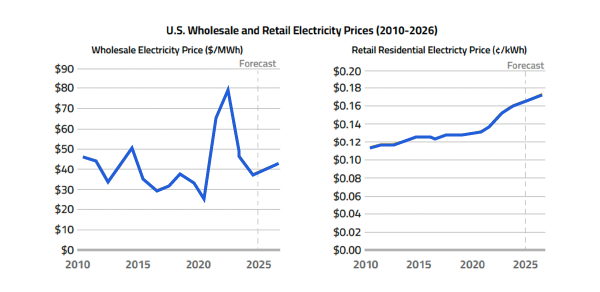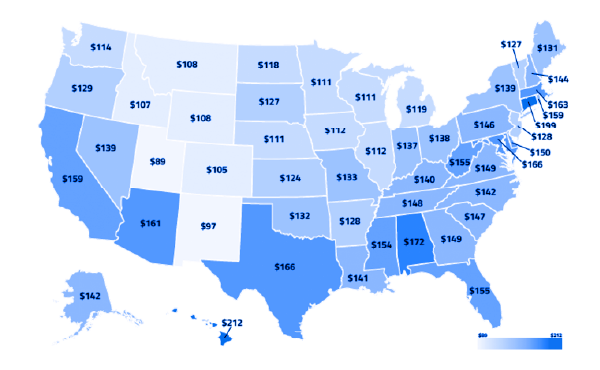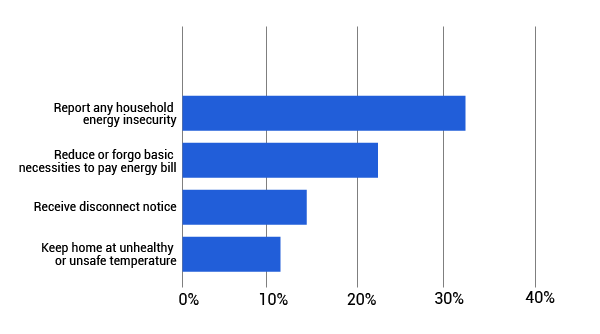Master Blog
Why America’s Utility Bills Are Rising
And How Vertical AI Can Help

Across kitchen tables in America, families are asking the same uneasy question: Why is my utility bill climbing again?
This isn’t an isolated frustration. Nearly 60 utilities across the country are raising or seeking approval to raise their rates this year, representing $38.3 billion in new charges for more than 56.7 million electric customers and $3.5 billion for 26 million natural gas customers. If current policy proposals move forward, the average household could see an extra $110 added to their annual electric bill by 2026.
That’s real money for households already stretched thin. And I believe this moment presents a larger question: what is driving these increases, and how can utilities take a different path before costs spiral further?
The Forces Behind Rising Bills
Utility bills are no longer just another expense. They’re quickly becoming one of the largest line items in the monthly budget for households, alongside housing payments, car loans, health insurance, and cell phone bills. Very soon, the total cost of power, gas, and water may surpass both healthcare and car payments, second only to the mortgage. That’s how significant this issue has become.
Figure. The Rising Residential Retail Price of Electricity (Source: U.S. Energy Information Administration)
Utility bills aren’t random. They are shaped by the fundamental costs of generation, transmission, and distribution:
- Generation: Building and running power plants.
- Transmission: Moving electricity long distances over high-voltage lines.
- Distribution: Delivering power through local lines into homes and businesses.

Figure. Compound annual growth rate for residential electricity prices over time (Source: U.S. Energy Information Administration)
But today, new forces are colliding with these fundamentals:
- The AI Data Center Gold Rush – The explosive demand for AI training and processing is driving electricity consumption at an unprecedented pace. Recent research estimates that about $720 billion of grid spending through 2030 may be needed just to meet this surge in demand.
- The Great Gas Export Boom – More U.S. natural gas is being exported overseas, leaving less for domestic power generation and driving up prices. The Energy Department reports the cost of gas used to generate power jumped more than 40% in the first half of this year compared to 2024.
- The Clean Energy Transition Costs – Proposed cuts to clean energy tax breaks and reduced federal support programs like LIHEAP add further pressure. The transition to clean energy that comes with significant upfront infrastructure costs are now being passed on to consumers.
- The Electrification Wave – The surge of electric vehicles (EVs) and electrified assets adds new loads to the grid. While this shift is environmentally beneficial, it is dramatically increasing electricity demand just as supply constraints tighten.
- Rising Demand Across Sectors – More households, more devices, more data, more everything — all pulling on the same grid.
From my perspective, these forces are converging in a way that challenges utilities to think differently about operations, investment, and customer experience. What I hear from utility leaders is a common urgency to not just manage costs, but to transform how they deliver value.
Caught Between Rising Costs and Customer Expectations
Utility companies find themselves in a difficult position. On one side, they face relentless pressure from regulators and customers to keep rates low. On the other side, they must invest billions in infrastructure upgrades, manage soaring fuel costs, and meet exploding demand from data centers and electrification.
Figure. Trends in U.S. wholesale and retail electricity costs 2010-2026 (Source: U.S. Energy Information Administration)
The complexity is felt by customers every month. Just this weekend, I spent time with friends dissecting recent energy bills. It took us half an hour just to make sense of the charges, and the joke at the table was that you need a CPA and a lawyer to decode a typical statement. One friend pays about $200 a month for an unoccupied home in Austin. Another has solar and a Powerwall in California, but still sees high bills because charging an 80 kWh EV multiple times a week adds up. These are not edge cases. They are a window into how opaque billing, new loads, and changing usage patterns collide in ways customers do not always understand.
Figure. Average U.S. Monthly Electric Bills in 2024 (Source: U.S. Energy Information Administration)
Traditional utility operations - with their siloed systems, manual processes, and fragmented customer touchpoints - simply can't keep pace. Customer service costs are spiraling as call volumes surge with billing complaints. Field service expenses multiply as aging infrastructure requires more maintenance. Back-office operations strain under the weight of complex rate structures and regulatory compliance.
The result? These operational inevitably show up in higher bills for customers
Figure. Utility affordability challenges for American households (Source: U.S. Census Bureau)
The Moment of Choice for Utilities
While AI is fueling much of the increased electricity demand, I firmly believe it also holds the key to solving the cost crisis. The very technology driving new pressures on the grid can, if applied thoughtfully, help utilities unlock unprecedented efficiency, resilience, and customer value.
But getting there requires a shift in mindset. Utilities are at a crossroads:
- Stay the course with incremental fixes: Continue investing in siloed, custom-built systems that are costly to maintain, slow to adapt, and incapable of delivering the seamless experiences customers now expect.
- Or reimagine with integrated platforms: Embrace vertically integrated, AI-powered platforms that unify customer experience, workforce operations, and grid intelligence. These platforms reduce cost to serve, create new self-service opportunities, and deliver the agility utilities need to adapt to changing markets and regulations.
For decades, the “build versus buy” debate shaped utility technology strategy. In my view, those days are over. The pace of disruption, the scale of investment needed, and the urgency to address rising bills mean the debate is effectively over. Utilities can no longer afford fragmented, homegrown solutions. The path forward is platform-driven transformation.
The SEW Way
At SEW, we’ve spent more than a decade working with 450+ utilities worldwide, perfecting what utilities need most: a vertically integrated AI platform built specifically for the energy and utility industry. Our Vertical AI platform goes beyond automating individual tasks. It transforms the entire utility ecosystem.
With SEW AI Platforms — purpose-built, vertically integrated, and powered by Vertical AI — I’ve seen how utilities can shift from managing crises to shaping their own future. From my experience, the most successful transformations are those that combine operational intelligence with a deep understanding of customer needs. Here’s how this plays out across three critical dimensions:
Customer Experience & Engagement
- Customers often feel lost in fragmented channels. Utilities that unify interactions across web, mobile, AI agents, voice, text, and social consistently see higher trust and satisfaction. An omnichannel experience isn’t just convenient, it’s a signal that the utility understands and anticipates customer needs.
- Predictive customer insights make a real difference. In transformation projects I’ve overseen, utilities that anticipate customer needs before a call or complaint happens reduce friction, improve engagement, and elevate customer satisfaction.
- Personalization matters more than ever. Tailoring communication and service based on usage patterns and preferences turns routine interactions, like billing or outage notifications, into meaningful experiences that reinforce trust and transparency.
Operational Efficiency & Grid Resilience
- Many utilities struggle with inefficiencies hidden in manual workflows and siloed systems. Organizations that embrace integrated, AI-powered operations free staff to focus on high-value work, which directly improves reliability and lowers cost to serve.
- Predictive analytics aren’t just theoretical. In practice, they prevent outages before they occur, reduce emergency response costs, and make the grid far more resilient. I’ve seen teams transform from constantly firefighting to planning proactively because they can see issues coming.
- Field operations are another area where intelligence matters. Optimizing routing and scheduling with AI reduces truck rolls, extends asset life, and allows teams to operate strategically rather than reactively.
- Billing and payments remain a major stress point. Utilities that automate these processes see fewer errors and faster collections, which translates to a better customer experience and healthier operations simultaneously.
Equity, Access & Community Impact
- From my experience, proactive support is often overlooked. Utilities that identify at-risk households and connect them to assistance programs or flexible payments reduce financial stress and foster community trust.
- Payment flexibility isn’t just a nice-to-have, it’s essential. Adaptive approaches allow utilities to support their customers without jeopardizing cash flow or operational stability.
- Finally, data-driven community initiatives work best when built on integrated insights. Utilities that use analytics to guide energy efficiency, sustainability, and outreach programs benefit both the communities they serve and their own long-term operational resilience.
This is about rethinking the operating model of a utility — shifting from reactive to predictive, from fragmented to unified, from infrastructure-only to infrastructure + people + intelligence.
That is the SEW way — giving utilities the digital backbone they need to manage rising costs while delivering reliable, equitable, and modern energy experiences.
From Pressure to Transformation
Utility bills will continue to make headlines. But the real story isn’t about costs rising. It’s about the opportunity to innovate, to rethink how utilities operate and serve their customers.
The question is not whether transformation is needed. It’s whether utilities will seize the moment to invest in platforms that can make energy experiences simpler, smarter, and more sustainable for every customer.
At SEW, we’ve seen what works. A connected platform-led transformation isn’t just about technology, it is a framework for turning operational pressures into strategic advantage. I feel privileged to be working alongside utility leaders who are reimaging what energy can be for people and communities, and I look forward to partnering with more utilities ready to take that step, helping the industry lower the cost to serve, strengthen resilience, and deliver energy that is not only affordable and reliable, but also truly customer-centric.






